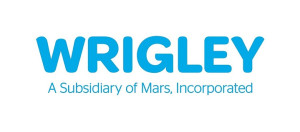 Psychologists at Dartmouth and elsewhere are finding evidence that of brain change in adults, as long as adults keep learning. So you can teach old dogs new tricks! Wrighley’s
Psychologists at Dartmouth and elsewhere are finding evidence that of brain change in adults, as long as adults keep learning. So you can teach old dogs new tricks! Wrighley’s
There is no old dog than chewing gum that goes back 5,000 years when Neolithic people chewed bark tar for its antiseptic properties and other medicinal advantages. The Greeks and Roman chewed gum made from the resin of mastic trees. The Aztecs used chicle as a base for gum and chewed it as a mouth freshener.
John B. Curtis of Maine observed that American Indians chewed resin from the sap of Spruce trees. In 1848, he developed and sold the first commercial chewing gum in the United States, called The State of Main Pure Spruce Gum
Thomas Adams, an American scientist and inventor continued the trail when his company sold New York Chewing Gum in 1871, followed by Black Jack in 1884 and Chiclets in 1899, which is still sold by Cadbury Adams, now owned by Kraft.
A few years earlier William Wrigley, Jr. packaged his first chewing gum in 1892 and the rest is history – Juicy Fruit, Spearmint, Double mint, etc. The Wrigley Company became the world’s largest chewing gum company, selling its products in 180 countries but facing new challenges. It was acquired by Mars in 2008 for $23 billion.
U.S. chewing gum has gone through changing colors, flavors and shapes for generations. Wrgley’s first lateral change was sugar free Extra in 1984, followed by different sugar substitute ingredients in Orbit and Eclipse in 2001. While sugar free gums bolstered sales for a decade, sales revenues have declined since 2010. At the same time U.S. sales of energy-boosting food and beverages have been skyrocketing.
Wrigley is making is second lateral move to capture a share of the energy booster market. through chewing gum. It is launching Alert next month as the first mass market caffeinated gum. It will have 40Mg of caffeine per piece, about half the amount of caffeine in an eight ounce cup of coffee.
The Company is targeting consumers over 25, who are the heaviest users of energy drinks and foods. A package of eight pieces will sell for $2.99, – a much cheaper way of getting caffeine in your system than coffee; and more convenient than logging bottles.
Wrigley developed a 100 mg caffeinated gum for the military for several years. It is now reducing the dosages and taking it to the mass market with a smaller civilian kick, that is, if you chew only one piece at a time.
Notwithstanding its stated target, young students will chew Alert in class to keep awake, to prep for exams and energize themselves for other activities. With Mars’ budget power behind Alert, there is now reason to think that it will fail to reverse the decline of chewing gum sales.
There are more lateral moves for chewing gum ahead for Wrigley and its gum competitors. Wrigley cannot stand by and let Johnson & Johnson’s Nicorette score high sales, without eventually entering the nicotine gum market. After all, unlike the periodic use of Aspergum, nicotine is addictive enough to keep ex-smokers chewing. J&J and its U.S. distribution licensee GlaxoSmithKline cannot compete in distribution channels with Mars, should Wrigley enter this arena. Wrigley could not only move a nicotine gum to the front of the drug store, but drive the item through many other condiments and snack channels where it is well placed, – supermarkets, restaurants, cinemas, gas stations, convenience stores…wherever or however candy, condiments, snacks and cigarettes are sold.
Gum is also making a potentially awesome return to its ancient medicinal uses. Can Chew is a San Diego cannabis chewing gum that is making its way into new cannabis dispensing machines in states that legalize medicinal marijuana. There are still great federal obstacles to growth in this market; but it will happen in time and Wrigley will probably be there.
The big future premium value for gum and for Wrigley and its future pharmaceutical partners, will be in medical areas where medicaments have to be administered on a continuous delivery basis. Chewing gum is a continuous activities and saliva is a powerful bio-chemical delivery mechanism. The old gum dog can learn new tricks!
Milton Kotler
March 9, 2013

I found your website perfect for my needs. It contains wonderful and helpful posts. Goodwill Car Donation
Goodwill Car Donation
If you are pleased with our blog, you will be pleased with our new book Market You Way to Growth: Eight Ways to Win, by Philip and Milton Kotler, 2013, Wiley.
Philip and I would be delighted for your to share our blog with your group. We also welcome substantive comments with we can discuss. The Chinese edition of Market Your Way to Growth should be available in China this month.
Milton Kotler
If you are pleased with our blog, you will be pleased with our new book Market You Way to Growth: Eight Ways to Win, by Philip and Milton Kotler, 2013, Wiley.
Milton Kotler